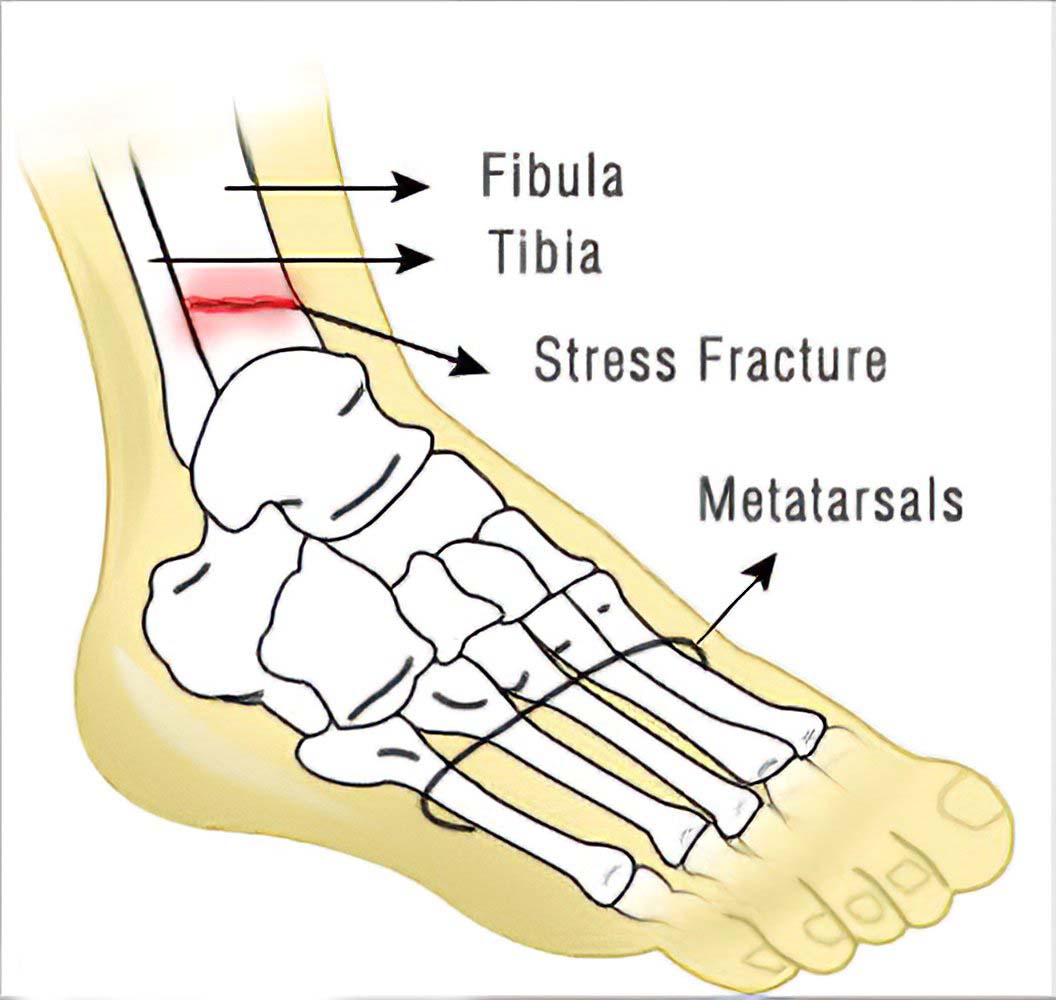A stress fracture is a small crack or hairline fracture in a bone. It typically occurs due to repetitive stress or overuse of a particular bone. Stress fractures commonly affect weight-bearing bones, such as the bones in the legs and feet, particularly the tibia (shinbone) and metatarsal bones in the foot.
Stress fractures often develop gradually over time as a result of repeated impact or excessive strain on the bone. Factors that can contribute to the development of stress fractures include:
- Overtraining: Engaging in high-impact activities, such as running or jumping, without giving the body enough time to rest and recover.
- Sudden increase in activity: A rapid escalation in the duration, intensity, or frequency of exercise or sports participation can place excessive stress on the bones.
- Improper footwear: Wearing shoes that do not provide adequate cushioning or support can increase the risk of stress fractures.
- Poor bone health: Conditions that weaken the bones, such as osteoporosis, can make them more susceptible to stress fractures.
- Certain sports or activities: Sports that involve repetitive movements, such as distance running or basketball, can increase the likelihood of stress fractures.
The symptoms of a stress fracture may include:
- Pain: Initially, the pain may be mild and occur during activity. Over time, the pain may become more pronounced and occur during normal daily activities.
- Tenderness: The affected area may be tender to the touch.
- Swelling: Swelling can occur around the site of the stress fracture.
- Bruising: Some individuals may experience discoloration or bruising around the affected area.
If you suspect a stress fracture, it is important to seek medical attention for proper diagnosis and treatment. A healthcare professional, typically an orthopedic specialist, may order imaging tests such as X-rays, MRI, or bone scans to confirm the presence of a stress fracture.
Treatment for stress fractures typically involves a period of rest and limited weight-bearing on the affected bone. The use of crutches or a walking boot may be necessary to offload the bone and promote healing. Ice therapy and nonsteroidal anti-inflammatory drugs (NSAIDs) can help reduce pain and inflammation. Physical therapy may also be recommended to aid in the recovery process and provide guidance on exercises to maintain strength and flexibility.
It is crucial to allow sufficient time for the stress fracture to heal completely before resuming normal activities. Failure to do so may lead to a more severe fracture or prolonged recovery. Once the fracture has healed, a gradual return to activity with proper training techniques and appropriate footwear is recommended to prevent future injuries.
Remember, the information provided here is for general knowledge, and it’s important to consult with a healthcare professional for an accurate diagnosis and personalized treatment plan.



